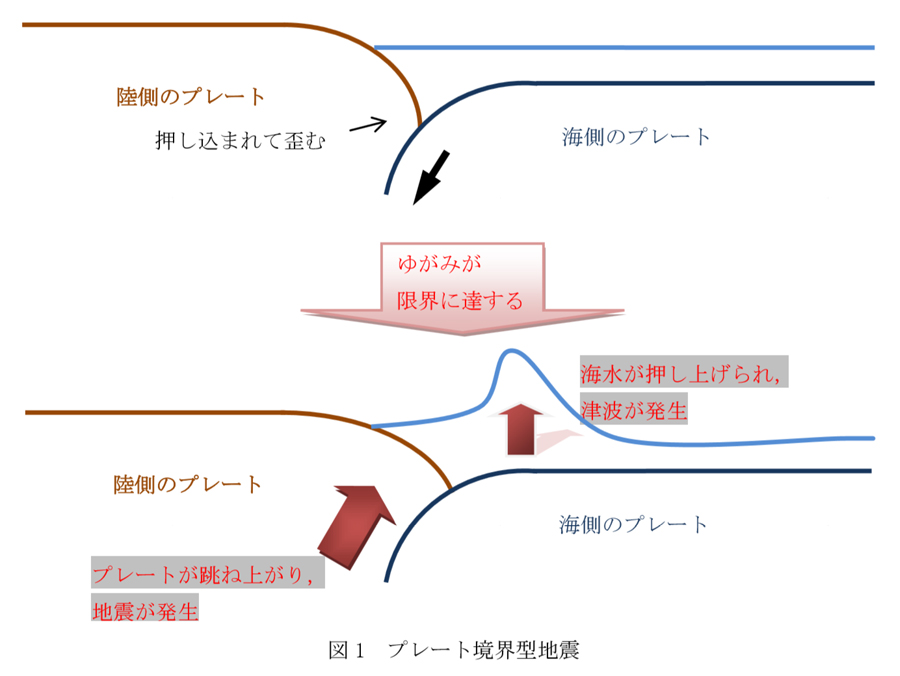Types of earthquake
Here, we describe as two "(near-field earthquake) seismic active fault type", "type plate boundary earthquake" broadly divided into the earthquake.

Here, we describe as two "(near-field earthquake) seismic active fault type", "type plate boundary earthquake" broadly divided into the earthquake.

In a place called the trough or trench (※ 1) is, (※ 2) is subducting under the plate of the landward side of the ocean plate.
At that time, the plate of the sea side, but we will push underground the land side of the plate, the distortion reaches the limit, the landward side of the plate springs up, a huge earthquake occurs (Figure 1).
At this time, since the water is pushed up sharply, tsunami occurs.
Great East Japan Earthquake that occurred on March 11, 2011 is applicable to the type of information.

Compression by the sea side of the plate, also affect these inland active faults. Inland active fault is displaced by the pressure of the plate on the ocean side, localized earthquake occurs.
| Scale (magnitude) | Prediction | Tsunami | Hypocenter | |
|---|---|---|---|---|
| Plate boundary | Large | Relatively simple | Occur | Deep |
| Active fault type (direct type) | Small | Difficult | Unlikely to occur | Shallow |